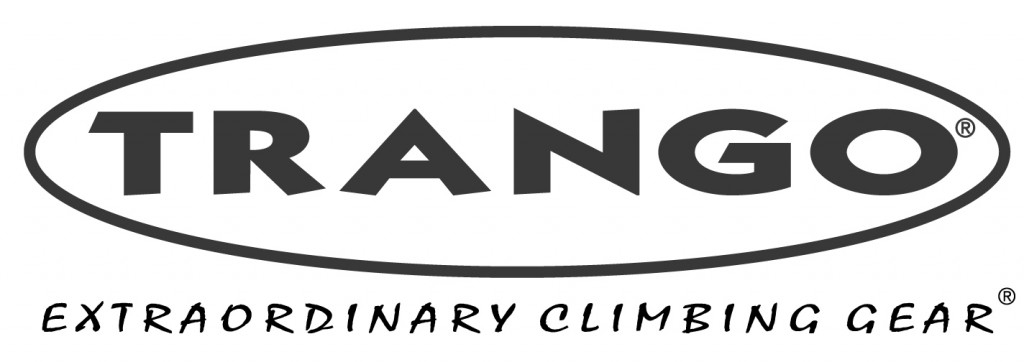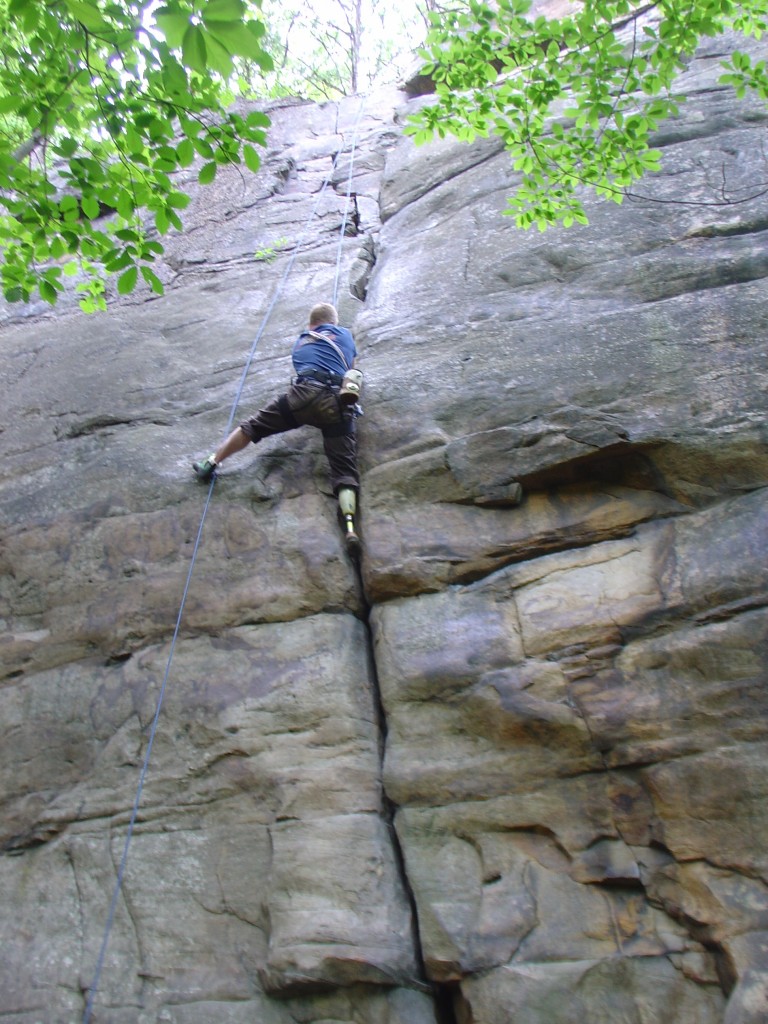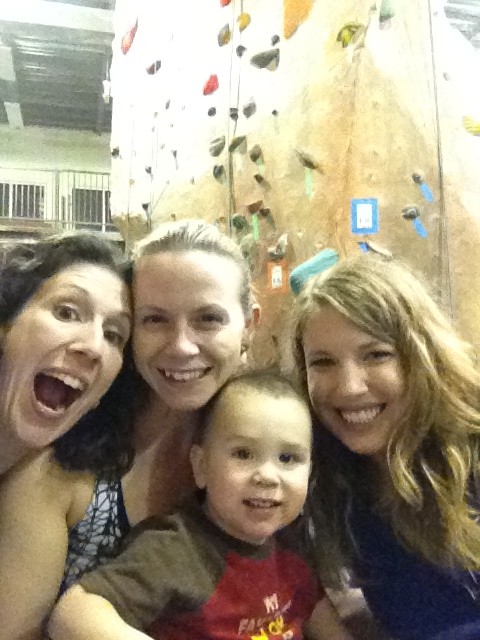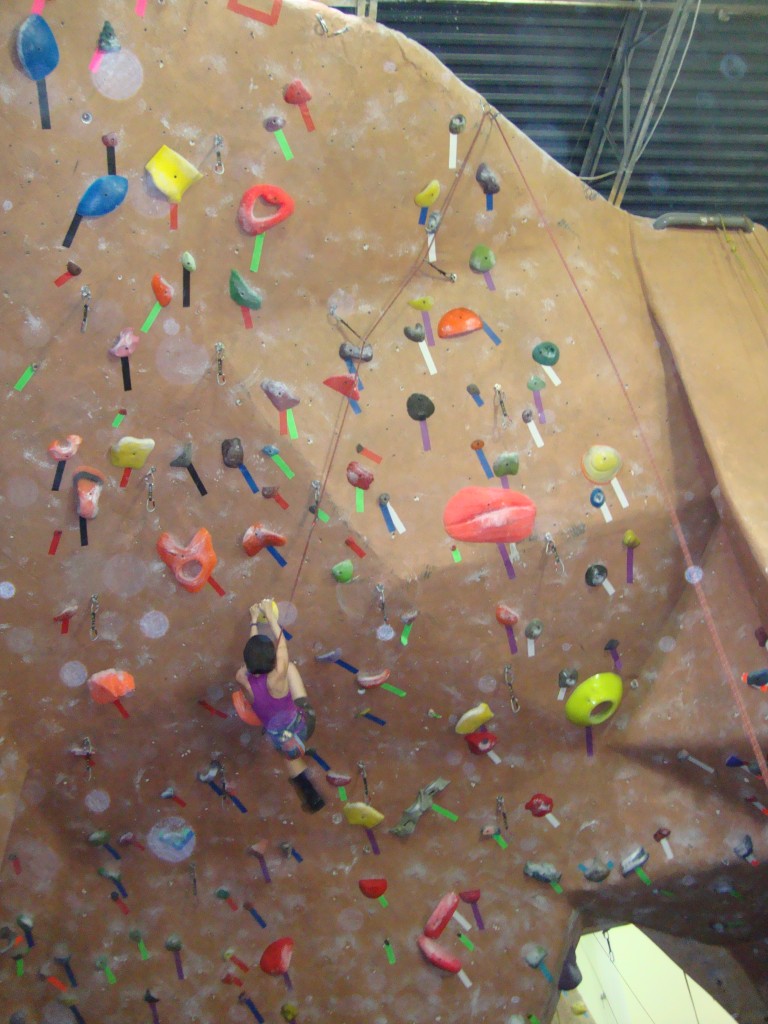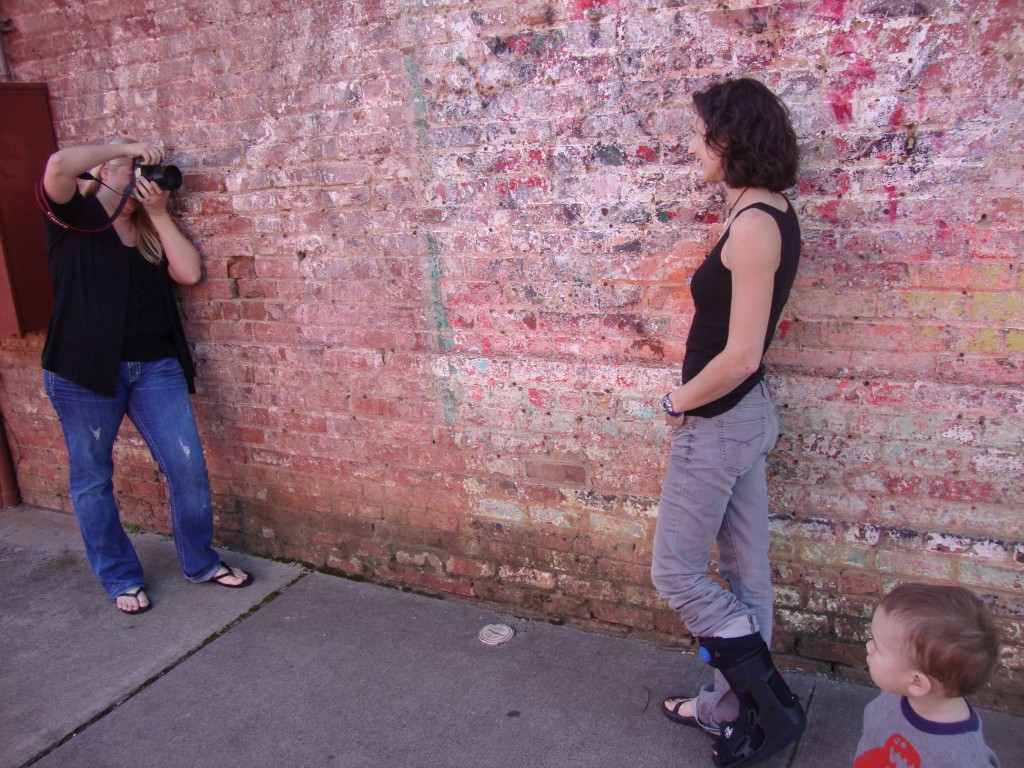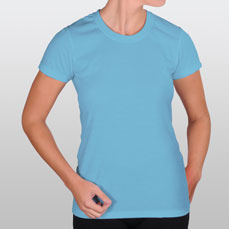Last week I posted about PUSH muscle training, and why its important. Of equal importance is shoulder strength – all those tiny little stabilizer muscles that keep your shoulder in place while you latch a dyno, lay in hard on a gaston, or run laps on horizontal terrain. Climb long enough and I guarantee you will either sustain a shoulder injury yourself or climb with someone who does. Sometimes shoulder problems are chronic and creep up gradually as dull, nagging aches that never quite seem to go away. Other times these injuries occur acutely, resulting from a specific motion or fall scenario. Regardless of how it happens however, shoulder injuries suck, and should be avoided like the plague. (For lots of good info on shoulder injuries, check out the info here, compiled by a friend of mine and her husband who are also physical therapists).
Although sometimes a shoulder injury is unavoidable, there are fortunately several safeguards that the smart, proactive climber can utilize to stack the odds in their favor. My first forays into a rotator cuff strengthening program came under the supervision of a PT in January of 2009, after an awkward mantle (in the gym, go figure…) brought on a nauseating, tearing sensation across the top of my left shoulder. Thankfully the damage was relatively minor and I was able to get back on track within 3 months or so.
That being said, I was a rotator cuff nazi for the rest of that year, faithfully doing my thera-band exercises at least 5 days a week. Once I started to trust my shoulder again, I felt comfortable maintaining where I was at and cut down to just 2 or 3 times per week. Just like with my antagonist training, as I’ve begun to project harder, tweakier lines in the last year or so, I’ve thrown in a few more exercises here and there to hopefully provide some added stabilizer insurance.
The following exercises are ones that I feel every climber should do on a regular basis if he or she wants to save their shoulders.
1. EXTERNAL ROTATION: This movement is probably the foundation of all shoulder stabilizer exercises. It can be performed with a wide variety of equipment and angles, making it easy to increase/decrease the difficulty as needed. Start out with 2-3 sets using thera-bands or very light dumbbells (as in 2-3 pounds), and work up to 5-10 pounds. Make sure that the arm remains flexed 90 degrees at the elbow, and rotate posteriorly (towards your back). Move at an even, controlled pace both up and down.
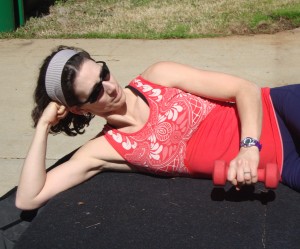 Side-lying external rotation - start |
|
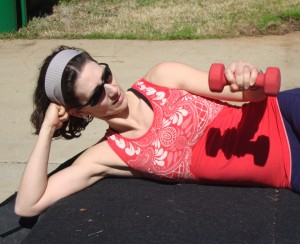 Keep your elbow on your hip and hinge your arm upwards. |
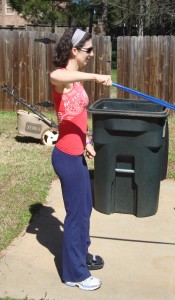 Overhead External Rotation with bands |
|
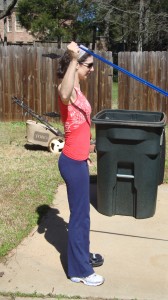 Overhead motion mimics climbing better than side-lying. Keep your elbow still. |
2. INTERNAL ROTATION: This movement is the mirror image of the previous one. You’ll probably be able to use a little more weight/thicker thera-band for these exercises. This time instead of rotating away from your body, you will rotate in towards the your center. Again, keep it slow and controlled.
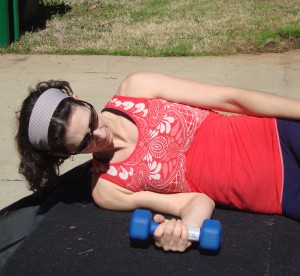 Side-lying Internal Rotation - start. You can put a pillow under your head if its more comfortable. |
|
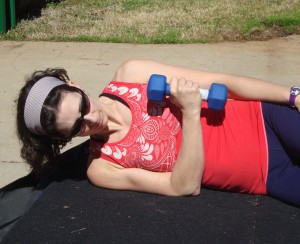 Rotate inwards and upwards, keeping your elbow pinned to the ground (or crash pad...) |
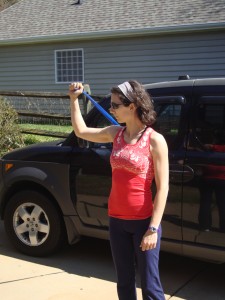 Overhead Internal Rotation w/Therabnd - start. |
|
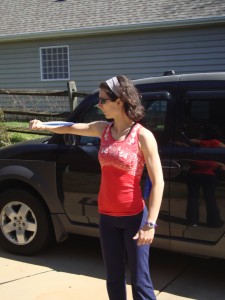 Overhead Internal Rotation w/Theraband - hinge at elbow. |
)3. THE “RAISES”: Raising your arms in front, to the side, and behind your body (aka flexion, abduction, and extension) works many different parts of the shoulder. All of these exercises can be done with dumbbells or thera-bands. Keep a slight bend in your elbows and make a conscious effort to keep your shoulders “down and back” throughout the duration of the exercises.
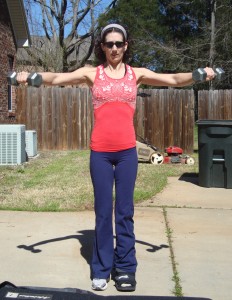 Lateral Raise |
|
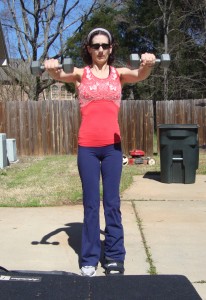 Front Raise |
|
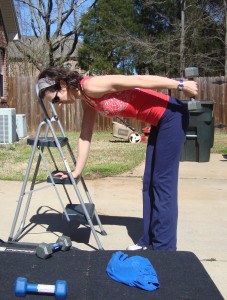 Posterior Delt Raise |
4. RETRACTION: This scapular movement engages the small muscles on either side of the spine on your upper back. Squeeze your shoulder blades together and you can feel these little babies working. You can isolate the retraction movement with dumbbells/thera-bands one arm at a time, or do Reverse Flyes. To maximize your efforts, focus on the shoulder blades drawing together at the top of every rep.
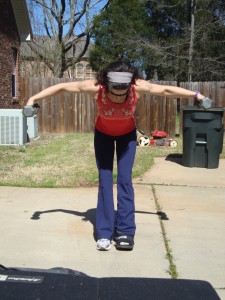 Reverse Flyes |
|
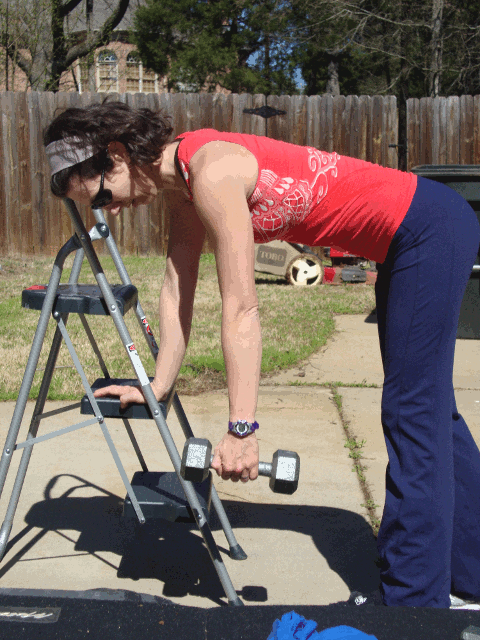 Isolated Retraction |
5. PROTRACTION: This movement causes the shoulder blade to slide forward and outward along the back, making the back to appear arched. Either isolate the movement one arm at a time (the opposite direction of retraction), or add a “plus” to the push-ups in your antagonist routine, by pushing your shoulder blades up towards the ceiling at the top of the movement.
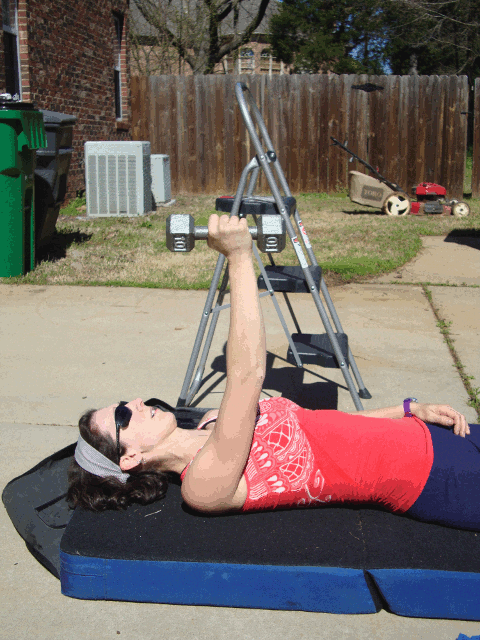
Ideally you’d perform all of these, but unless you’re like me and stuck in a walking cast with nothing better to do than strengthen your rotator cuff, you might not have the luxury of time. The most important exercises by far are external and internal rotation, so if you have time for nothing else, choose one exercise from each of those options to do 2-3 times per week, and rotate through the other ones on a regular basis as time allows. Do these either on climbing days AFTER you climb, or work them in at the end of your PUSH muscle workout.
Rotator Cuff Training goes hand in hand with Antagonist Training, but serves a very different purpose. The best antagonist exercises are compound movements, meaning that they involve more than one muscle group. Compound movements bring about more efficient strength gains, as well as develop better coordination and balance. Rotator cuff training, on the other hand, isolates those very specific tiny muscles that we as climbers often ask too much of. It may not seem like you’re accomplishing very much since the weights are so small and the movements so specific and focused, but a little preventative medicine will go a long way! A solid strength training program for climbers will include a healthy combination of both antagonist training and rotator cuff strengthening.
Just like there are numerous ways to tackle a crux sequence on a boulder problem, there are about a billion ways to fit extra-curricular training into your schedule. Feel free to share your modus operandi – what has worked for you, and maybe areas where you struggle?





